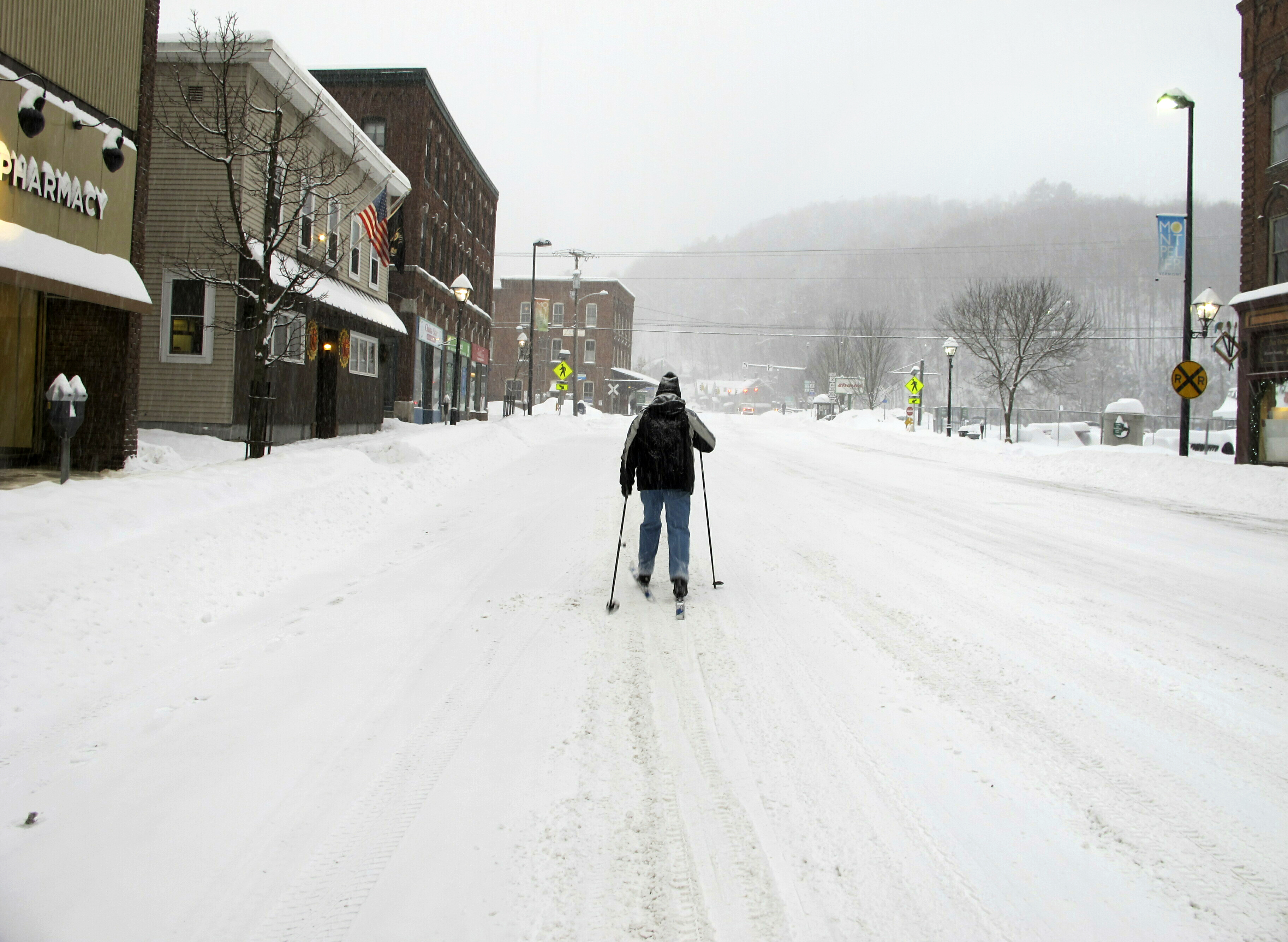
Major winter storm wreaks havoc on travel
BOSTON (AP) — Bitter cold is setting in after a major winter storm blanketed a wide swath of the country in snow, sleet and rain this weekend, creating dangerously icy conditions that promise to complicate cleanup efforts and make travel challenging on Martin Luther King Jr. Day.
Some of the coldest temperatures felt so far this season started to set in across the Midwest and Northeast Sunday and are expected to plunge further overnight.
Wind chills will bring temperatures into teens in the New York City area and down to minus 40 degrees Fahrenheit (minus 40 degrees Celsius) in upstate New York, the National Weather Service predicted.
In New England, they’ll fall to as low as 20 F (29 C) below zero around Boston and as low as 35 F (37 C) below zero in parts of Vermont, Maine and New Hampshire, the service said.
Temperatures across the Great Lakes, Ohio Valley and the Mid-Atlantic will drop 10 to 20 degrees Fahrenheit below average, the service said.
“It’s life-threatening,” said Ray O’Keefe, a meteorologist with the National Weather Service in Albany. “These are dangerous conditions that we’re going to be in and they’re prolonged, right through tomorrow.”
The freeze will follow the weekend’s run-ins with power outages, canceled trains and planes, overnight stays at the airport and traffic jams.
Local officials warned residents to limit their time outside to prevent frostbite and to avoid treacherous travel conditions. They also said places could see strong wind gusts, flooding and further power outages.
Utilities in Connecticut reported more than 20,000 customers without power by Sunday afternoon.
“We had more freezing rain and sleet than we expected,” Hartford Mayor Luke Bronin said Sunday as public works crews across the state raced to clear and treat major roadways before dangerous black ice could form.
Amtrak canceled trains across the Midwest and Northeast over the weekend, but promised full service would resume Monday. Boston’s transit system urged commuters to allow 10 to 15 minutes of extra travel time and warned of icy conditions for pedestrians come Monday.
The storm — caused by the clash of an Arctic high-pressure system with a low-pressure system coming through the Ohio Valley — wreaked havoc on air travel and other forms of transportation all weekend.
More than 1,500 flights were canceled nationwide Sunday, according to FlightAware, a flight tracking company.
Among the hardest hit was Boston’s Logan Airport, where stranded passengers lingered Sunday as typically bustling security lines, ticketing counters and baggage claims were largely deserted.
Xavi Ortega, a 32-year old engineer from Spain, said he and his wife slept overnight at the airport after their Saturday night flight home to Barcelona was canceled. He said the couple hoped to board a flight Sunday night.
“We’ve been sleeping, playing Candy Crush,” Ortega said when asked how’d they been passing the hours.
A ferry service route across Lake Champlain between Vermont and New York was also closed Sunday and flights were mostly cancelled at major airports in Vermont and New Hampshire.
In the Midwest, where it dumped 10 inches (25 centimeters) of snow in parts, the storm caused a plane to skid on a slick runway at Chicago’s O’Hare International Airport on Saturday, though no injuries were reported.
In Kansas, a snowplow driver was killed when his vehicle rolled over, and in southeastern Missouri, slippery conditions caused a 15-vehicle crash on Interstate 55 on Saturday.
One saving grace of the storm: heavily populated coastal communities from New York to Boston largely escaped major snowfall after days of sometimes dire predictions.
Manhattan saw mostly rain while places along Connecticut, Rhode Island and Massachusetts’ coast recorded 2 to 5 inches (5 to 13 centimeters) of snow.
Mountain regions saw significantly more, to the delight of ski resort operators.
New York’s Adirondacks registered up to 20 inches (51 centimeters) while western Massachusetts’ Berkshires saw as much as 10 and parts of northern New England were on track to approach 24 inches of snow.
Nicholas Nicolet and his 6-year-old son Rocco welcomed the fresh powder as they cross-country skied on the sidewalks of Montpelier, Vermont early Sunday morning.
“We think it’s great,” Nicholas Nicolet said during the storm.
President Donald Trump urged Americans affected by the winter storm to “be careful” in a tweet early Sunday. But, as he’s done in the past, Trump conflated the short-term weather phenomenon with longer-term climate change.
The White House’s own National Climate Assessment recently rejected the idea that a particular plunge in temperatures can cast uncertainty on whether Earth is warming.
“Amazing how big this system is,” Trump tweeted. “Wouldn’t be bad to have a little of that good old fashioned Global Warming right now!”
__
Associated Press reporters Bob Salsberg in Boston, Deepti Hajela in New York, and Lisa Rathke in Montpelier contributed to this story.
The Western Journal has not reviewed this Associated Press story prior to publication. Therefore, it may contain editorial bias or may in some other way not meet our normal editorial standards. It is provided to our readers as a service from The Western Journal.
Truth and Accuracy
We are committed to truth and accuracy in all of our journalism. Read our editorial standards.
Advertise with The Western Journal and reach millions of highly engaged readers, while supporting our work. Advertise Today.












